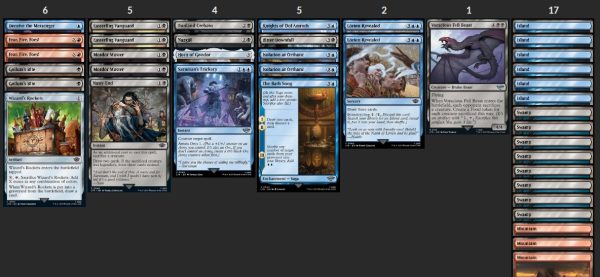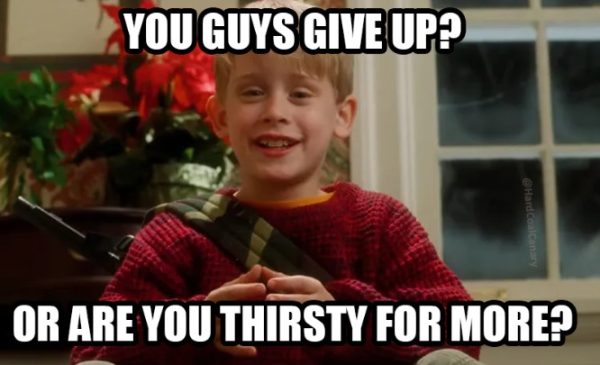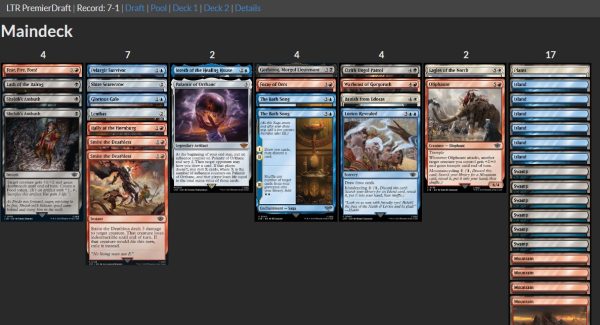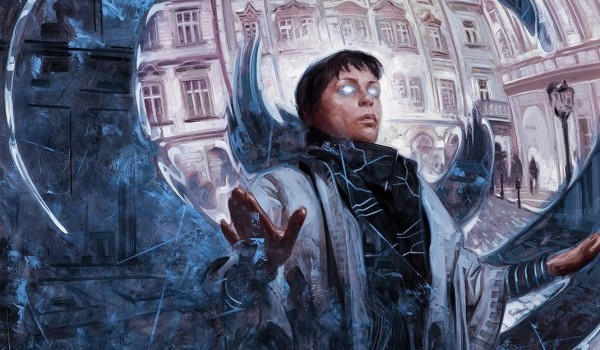Are you a Quiet Speculation member?
If not, now is a perfect time to join up! Our powerful tools, breaking-news analysis, and exclusive Discord channel will make sure you stay up to date and ahead of the curve.
Looping is a fascinating strategy that refers to shuffling one's graveyard back into their deck through two or more mechanisms. Each time this happens, the deck's spell density improves. Our lands stay in play, but all those spent spells go back into the deck to be drawn again. The second instance of this effect shuffles all those spells in, but also shuffles in the card that did it the first time. This allows us to see our deck again, and again, and again, looping our cards from graveyard to library.
Clear the Mind, Witness the Future, and Primal Command are examples of this effect from previous sets. Essentially, over an infinite number of turns, our draws gradually become better than our opponent's. Of note, our opponent's deck is unlikely to have cards to continue playing for an infinite number of turns, and this can be a win condition onto itself. The longer the game goes, the more likely we are to win. Our victory becomes inevitability.
Dramatic as it sounds, this effect is generally minor. Our deck is better, but we still have to draw a number of cards to get a sizeable advantage off of that. We still have to cast those spells. Often a looping effect will not affect the board, and throughout this entire process, our opponent is trying to kill us.
Often times these cards do not affect the board. Sometimes they don't even cantrip. However, every draw step, we extract a little more value. By the time we loop a second time, our advantage becomes overwhelming.
Looping in LTR
Lord of the Rings Tales in Middle Earth (LTR) offers an opportunity to loop via the third chapter of The Bath Song.
This card allows us to loop our decks and get back some of our valuable spells. If we have a second The Bath Song or a Revive the Shire, we can theoretically cast it infinite times. Important: The Bath Song and our natural draw step will cause us to draw six total cards after resolution and before the shuffle effect. We can mill ourselves out with poor timing.
The slower our deck is, the more important the Regrowth effect becomes. That being said, you do not need to hyper-focus on the idea of win conditions. If your spells do things, you will be able to do more of those things than your opponent, and you will win through sheer attrition. Worst case scenario, because our deck can go infinite, we can win through decking. Rather, our focus should be on survival.
Building to Loop
This strategy wins at a glacial pace. We need cards that will help us survive, and ideally, cards that generate value. Cheap interaction and card advantage are great in decks like this. It also wants to have powerful effects if they're available. Because we want to play a slower deck, there's value in considering splashes to enhance our overall power level. Our goal is to see every card in our deck at least once.

UBr Bath Song (7-1)
This deck has everything except for a way to loop The Bath Song. It has cheap interaction and value creatures, a powerful splash in two copies of Fear, Fire, Foes!, and powerful effects, primarily Horn of Gondor, but also Voracious Fell Beast.
Horn of Gondor is a humongous bomb, and a deck like this is going to play in such a way that we always have access to it. We'll draw, slow down the game, trade things off, and play our bomb. If it gets answered, we loop our graveyard and send them through our house of horrors again.

While this deck wasn't able to truly loop The Bath Song, it exacted a game plan that was able to survive a four-mana Catalog, and then take advantage of the card advantage and spell-density.
Situational Cards
Because these games go long, having access to silver bullets can be worthwhile. Westfold Rider, Cast into the Fire, and Shower of Arrows can answer difficult permanents.
Cool removal, bro
Cards like these can invalidate our strategy by sidestepping the more commonly targeted permanent types. A hand full of Claim the Precious and Glorious Gale do little against a Andúril, Flame of the West. While we might slow these cards down, we're unlikely to be able to ignore them.
Another situational card for this deck might be Nasty End. We typically make tokens or chump block, so it gets some value that way, but it's also a hard counterspell for Fear, Fire, Foes! and Gandalf's Sanction. Those cards can be outs for our opponents even when we think we're safe.
The Bath Song and Splashes
Splashes can enable more removal or powerful effects and this is a deck that likes both. I have found this to be especially true in LTR, where the landcyclers play really well with looping.

URBw True Loops (7-1)
This deck is a mess, but still has pieces to slow the game down and take over with card advantage. Of note, I typically cut lands for landcyclers, but because this deck can't afford to miss a land drop, I was happy to play seventeen lands with three cyclers. Throw these away early and loop them back later. I'm not planning on playing them on turn six or seven; I'm planning on playing them on turn eleven or twelve.
Rally at the Hornburg may seem out of place here, but the bodies exemplify how important survival is. Additionally, they turn on Shelob's Ambush, discount Lash of the Balrog, and later on can be great with both Cirith Ungol Patrol and Gothmog, Morgul Lieutenant.
We don't mind trading off at a slight loss in the early game, because we really only care about survival, and in the late game, our card advantage (both virtual and actual) is so overwhelming that the trades still made sense.
Grocery List for The Bath Song
Once I've secured a copy of The Bath Song, I'm likely to build around it. A strong The Bath Song deck is a really good approach to the format. It can muscle past many of the Tempt decks, and because cards trade pretty evenly in the format, the card advantage goes a long way.
The most essential component is cheap interaction. I want to make sure that I have early answers in my base colors. Smite the Deathless, Gollum's Bite, Glorious Gale, and Ranger's Firebrand are excellent in this deck. I also want a couple of point-and-click "kill anything" effects. I might be willing to splash for these depending on the makeup of my deck. Once the card is turned on, it's often good for the game, so an off-color Banish from Edoras or Bitter Downfall can be cast multiple times.
I want creatures that generate value and trade off at an advantage. If our opponent trades with our Eastfarthing Farmer or Protector of Gondor, then the cards have done their job. Those little pieces of value they leave behind generate value, slowly and steadily, just like we've planned. After that, we're pretty happy with playing the good cards that are passed to us. At some point, I will try to find a Revive the Shire and probably a Generous Ent to support it.
This has been one of the many build-arounds in the format to get my attention. I think it's one of the strongest, and I know it's one of the most fun. If you're looking for a new way to approach the format, and you see this four-mana blue saga, wash up and give it a shot.




